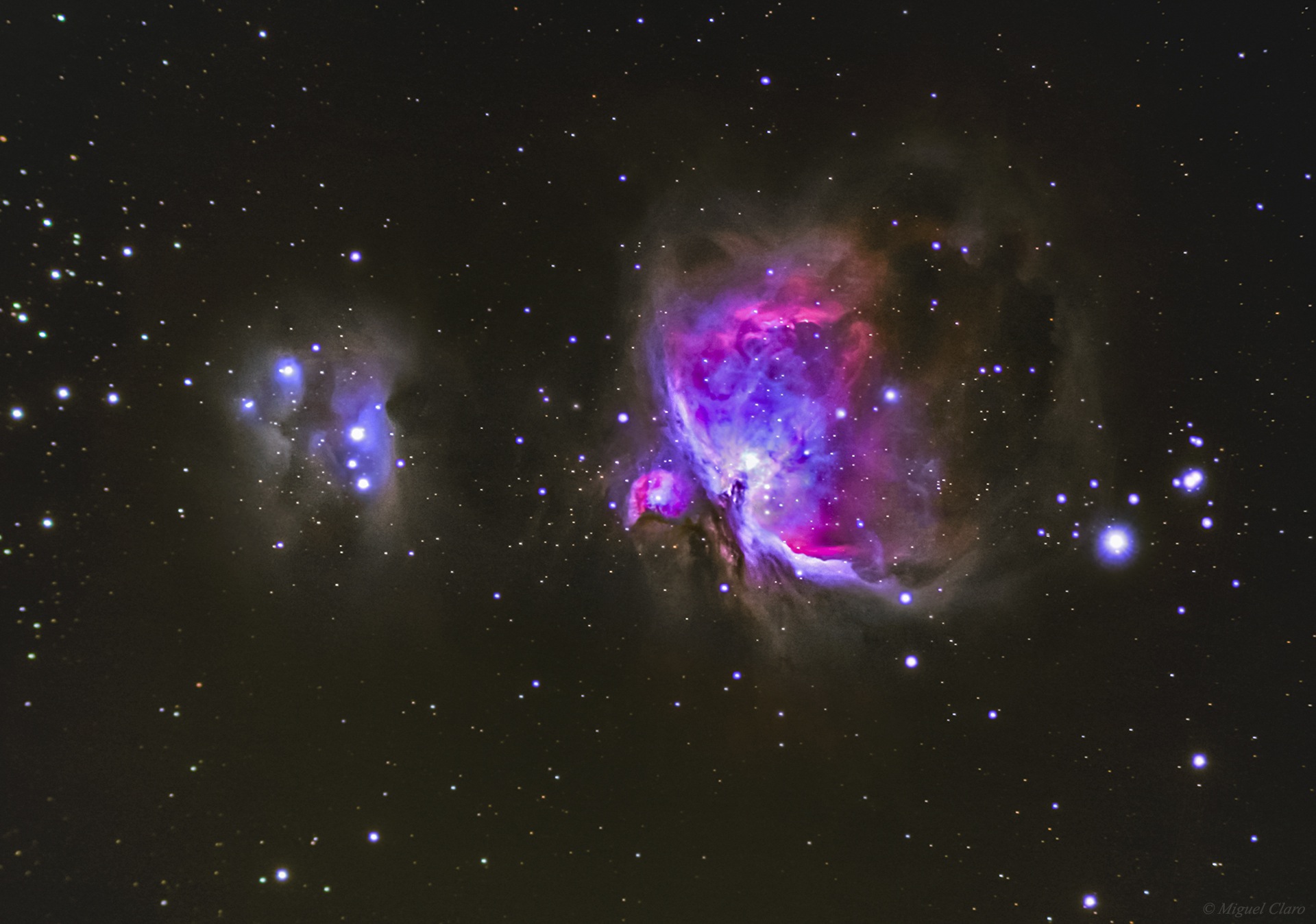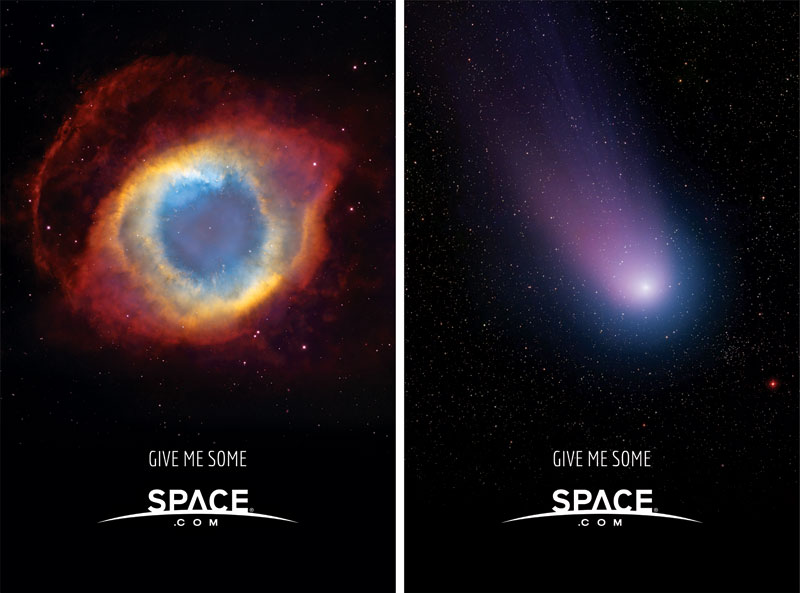Amateur Astronomer Snaps Stunning Orion Nebula View with Portable Gear (Photo)

The Great Orion Nebula glows in vivid shades of pink and purple in this stunning photo taken by an avid night sky photographer , who captured the image using portable photo gear for the first time.
Veteran astrophotographer Miguel Claro took the photo in Serra de Aire, Portugal near the Mira de Aire Caves complex. He used a portable Vixen Polarie Star Tracker Mount with a Canon 60Da camera (ISO 2500, exposure: 21s at f/7 with a focal 570mm) and Astro Professional ED 80 telescope to take 51 photos that were then combined in Maxim DL 5. The image was sent to Space.com on Feb. 7, 2014.
"I was impressed with the detail we reached using such a small mount," Claro wrote Space.com in an email, referring to the Vixen Polarie Star Tracker Mount. "It fit on my hand with less than a kilogram of weight." [See more spectacular photos of the Orion Nebula]
The Orion nebula, also known as Messier 42 or NGC 1976, is located approximately 1,500 light-years from Earth and spans roughly 40 light-years across. Oxygen and hydrogen gas emission create the vivid colors seen in the famed nebula’s region of star formation. One light-year is the distance light travels in one year, or about 6 trillion miles (10 trillion kilometers).
The Orion nebula is one brightest in the celestial sphere and can be spotted with the unaided eye as a bright point near the belt of the three stars in the constellation Orion. Another nebula, Messier 43 (M43), can be seen to the left of the Orion nebula.
M43 is a circular-shaped emission nebula appears to be separated from the Orion nebula by a dark dust lane in the foreground of the image. The nebulas are a part of a much larger Orion Molecular Cloud Complex, which includes Messier 78 and the Horsehead Nebula.
An interstellar cloud of dust reflecting light from hot young stars can be seen toward the left edge of this picture. This area comprises three regions known as NGC 1977, NGC 1975, and NGC 1973.
Breaking space news, the latest updates on rocket launches, skywatching events and more!
To see more amazing night sky photos submitted by Space.com readers, visit our astrophotography archive.
Editor's note: If you have an amazing night sky photo you'd like to share for a possible story or image gallery, please contact managing editor Tariq Malik at spacephotos@space.com.
Follow Space.com on Twitter @Spacedotcom. We're also on Facebook & Google+. Original story on Space.com.
Nina Sen is a freelance writer and producer who covered night sky photography and astronomy for Space.com. She began writing and producing content for Space.com in 2011 with a focus on story and image production, as well as amazing space photos captured by NASA telescopes and other missions. Her work also includes coverage of amazing images by astrophotographers that showcase the night sky's beauty.

